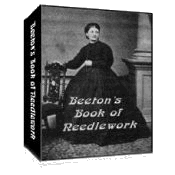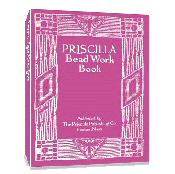Brier Stitch
Brier Stitch is a perfect example of one stitch being called by a number of names. It is sometimes called Cat Stitch or Coral Stitch. It is used in working over lines when a more fanciful effect is wanted than would be obtained by the use of a Simple Outline stitch. The stitch is used in sewing as well as in embroidery.
The Brier Stitch not only goes by numerous names, but has as many variations as well. Victorian ladies found that when a designed called for this particular stitch, they could use any variation of the stitch that suited them. Each variation gave a piece a totally different look.
To make it, begin at the point farthest from you and bring the needle up from beneath; take a short stitch toward the line along which you are working, slanting somewhat towards you, and throw the silk below the point of the needle so that a Buttonhole Stitch is formed when the silk is drawn through (See Ill. A). Take the second stitch on the opposite side of the line so that it shall be the reverse of the one just taken as to slant, forming the Buttonhole Stitch as before, and proceed thus along the length of the line. The stitch will be familiar to most workers.
Two or more stitches may be taken on each side of the line, instead of the single stitch, with good effect (See Ill. B).

Below is yet another variation of the stitch.

This stitch is sometimes employed in embroidering table linen. In place of the Simple Outline for tendrils and scrolls. When thus used, the stitches are made very short, resulting in a fine outline which is very effective and delicate. This is the stitch which is so familiarly known as Feather Stitch, and as some teachers designate Seamstress Feather Stitch to distinguish it from the opus plumarium.
Return to top of Brier Stitch page.
Return to Embroidery Stitches page.
Return to Victorian Embroidery and Crafts Home page.



 433 pages!
433 pages!

